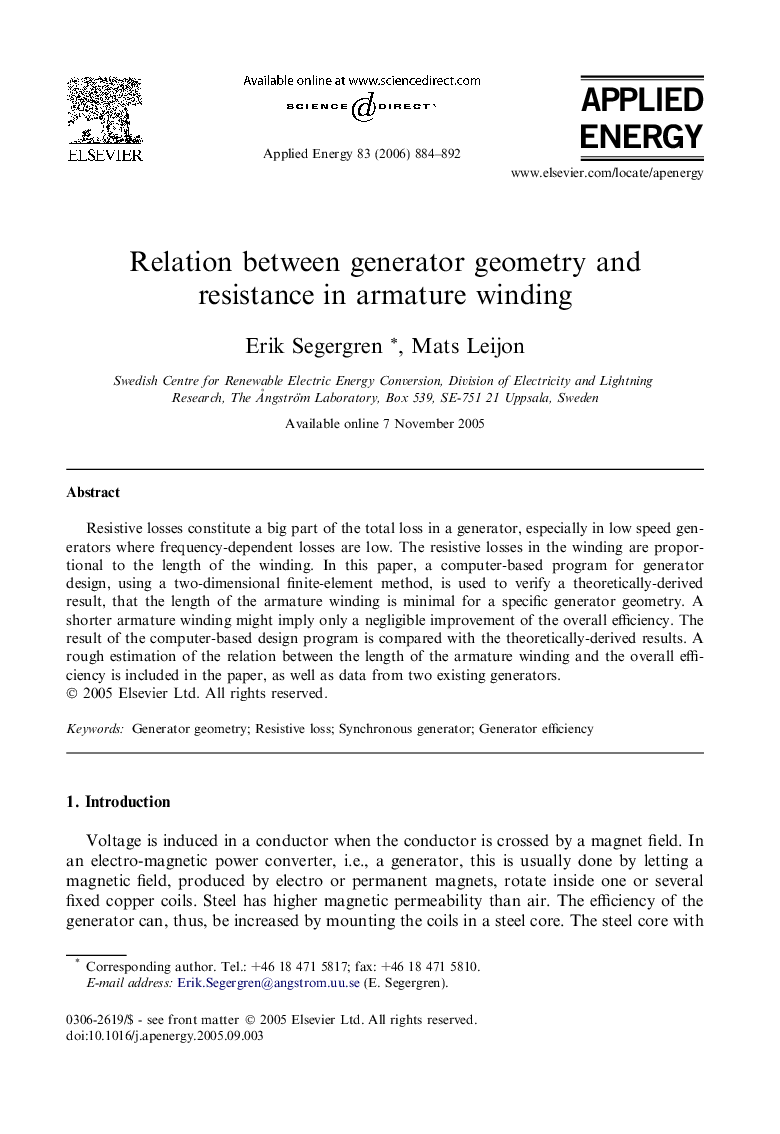| Article ID | Journal | Published Year | Pages | File Type |
|---|---|---|---|---|
| 245413 | Applied Energy | 2006 | 9 Pages |
Resistive losses constitute a big part of the total loss in a generator, especially in low speed generators where frequency-dependent losses are low. The resistive losses in the winding are proportional to the length of the winding. In this paper, a computer-based program for generator design, using a two-dimensional finite-element method, is used to verify a theoretically-derived result, that the length of the armature winding is minimal for a specific generator geometry. A shorter armature winding might imply only a negligible improvement of the overall efficiency. The result of the computer-based design program is compared with the theoretically-derived results. A rough estimation of the relation between the length of the armature winding and the overall efficiency is included in the paper, as well as data from two existing generators.
